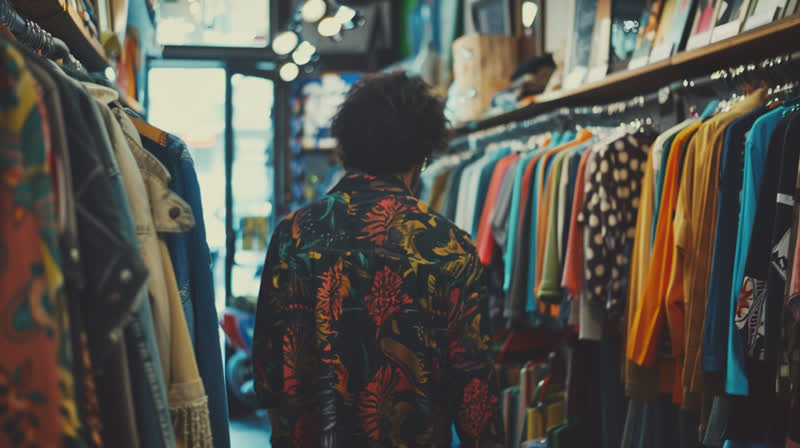Shopping for vintage clothing can be a thrilling adventure, especially for those who appreciate the unique charm and character of second-hand fashion. However, it can also be overwhelming, especially for beginners. With so many options available, it's essential to know what to look for to ensure you're getting high-quality vintage clothing that will stand the test of time. In this article, we'll guide you through the process of shopping for high-quality vintage clothing, from understanding the different eras and styles to inspecting the condition and authenticity of the garments.
Understand the Different Eras and Styles
Before you start shopping, it's crucial to have a basic understanding of the different eras and styles of vintage clothing. This will help you identify the pieces that resonate with your personal taste and aesthetic. From the flapper dresses of the Roaring Twenties to the bell-bottom jeans of the 1970s, each era has its distinct characteristics, fabrics, and silhouettes. Researching the different styles and eras will also help you recognize genuine vintage pieces and avoid reproductions.
Know Your Fabrics
Fabrics play a significant role in determining the quality and authenticity of vintage clothing. Natural fibers like cotton, silk, and wool are often preferred over synthetic fibers like polyester and nylon. Look for garments made from high-quality fabrics that are durable, breathable, and comfortable to wear. Avoid pieces with signs of wear, such as fraying, thinning, or discoloration, as these can be indicative of poor quality or excessive use.
Inspect the Condition
When inspecting the condition of a vintage garment, look for signs of wear, damage, or alterations. Check for stains, tears, missing buttons, and broken zippers. Make sure the seams are secure, and the fabric is not stretched or distorted. Also, inspect the lining, if any, for signs of wear or damage. A well-maintained vintage garment will have minimal signs of wear and will be in good condition overall.
Check for Authenticity
Authenticity is crucial when shopping for vintage clothing. Look for labels, tags, and other markings that indicate the garment's origin and era. Research the designer or brand to ensure the piece is genuine and not a reproduction. Be wary of pieces with missing labels or tags, as these can be indicative of a fake or altered garment.
Shop from Reputable Sources
Where you shop for vintage clothing is just as important as what you shop for. Look for reputable vintage clothing stores, online marketplaces, and sellers who specialize in vintage fashion. Read reviews, check ratings, and ask questions before making a purchase. A reputable seller will be transparent about the garment's condition, authenticity, and history.
Conclusion
Shopping for high-quality vintage clothing requires patience, research, and attention to detail. By understanding the different eras and styles, knowing your fabrics, inspecting the condition, checking for authenticity, and shopping from reputable sources, you'll be well on your way to building a stunning vintage wardrobe that reflects your unique style and personality.







